Leandro A. Passos
BioNeRF: Biologically Plausible Neural Radiance Fields for View Synthesis
Feb 11, 2024Abstract:This paper presents BioNeRF, a biologically plausible architecture that models scenes in a 3D representation and synthesizes new views through radiance fields. Since NeRF relies on the network weights to store the scene's 3-dimensional representation, BioNeRF implements a cognitive-inspired mechanism that fuses inputs from multiple sources into a memory-like structure, improving the storing capacity and extracting more intrinsic and correlated information. BioNeRF also mimics a behavior observed in pyramidal cells concerning contextual information, in which the memory is provided as the context and combined with the inputs of two subsequent neural models, one responsible for producing the volumetric densities and the other the colors used to render the scene. Experimental results show that BioNeRF outperforms state-of-the-art results concerning a quality measure that encodes human perception in two datasets: real-world images and synthetic data.
Enhancing Hyper-To-Real Space Projections Through Euclidean Norm Meta-Heuristic Optimization
Jan 31, 2023Abstract:The continuous computational power growth in the last decades has made solving several optimization problems significant to humankind a tractable task; however, tackling some of them remains a challenge due to the overwhelming amount of candidate solutions to be evaluated, even by using sophisticated algorithms. In such a context, a set of nature-inspired stochastic methods, called meta-heuristic optimization, can provide robust approximate solutions to different kinds of problems with a small computational burden, such as derivative-free real function optimization. Nevertheless, these methods may converge to inadequate solutions if the function landscape is too harsh, e.g., enclosing too many local optima. Previous works addressed this issue by employing a hypercomplex representation of the search space, like quaternions, where the landscape becomes smoother and supposedly easier to optimize. Under this approach, meta-heuristic computations happen in the hypercomplex space, whereas variables are mapped back to the real domain before function evaluation. Despite this latter operation being performed by the Euclidean norm, we have found that after the optimization procedure has finished, it is usually possible to obtain even better solutions by employing the Minkowski $p$-norm instead and fine-tuning $p$ through an auxiliary sub-problem with neglecting additional cost and no hyperparameters. Such behavior was observed in eight well-established benchmarking functions, thus fostering a new research direction for hypercomplex meta-heuristic optimization.
DDIPNet and DDIPNet+: Discriminant Deep Image Prior Networks for Remote Sensing Image Classification
Dec 20, 2022Abstract:Research on remote sensing image classification significantly impacts essential human routine tasks such as urban planning and agriculture. Nowadays, the rapid advance in technology and the availability of many high-quality remote sensing images create a demand for reliable automation methods. The current paper proposes two novel deep learning-based architectures for image classification purposes, i.e., the Discriminant Deep Image Prior Network and the Discriminant Deep Image Prior Network+, which combine Deep Image Prior and Triplet Networks learning strategies. Experiments conducted over three well-known public remote sensing image datasets achieved state-of-the-art results, evidencing the effectiveness of using deep image priors for remote sensing image classification.
FEMa-FS: Finite Element Machines for Feature Selection
Dec 05, 2022



Abstract:Identifying anomalies has become one of the primary strategies towards security and protection procedures in computer networks. In this context, machine learning-based methods emerge as an elegant solution to identify such scenarios and learn irrelevant information so that a reduction in the identification time and possible gain in accuracy can be obtained. This paper proposes a novel feature selection approach called Finite Element Machines for Feature Selection (FEMa-FS), which uses the framework of finite elements to identify the most relevant information from a given dataset. Although FEMa-FS can be applied to any application domain, it has been evaluated in the context of anomaly detection in computer networks. The outcomes over two datasets showed promising results.
From Actions to Events: A Transfer Learning Approach Using Improved Deep Belief Networks
Nov 30, 2022Abstract:In the last decade, exponential data growth supplied machine learning-based algorithms' capacity and enabled their usage in daily-life activities. Additionally, such an improvement is partially explained due to the advent of deep learning techniques, i.e., stacks of simple architectures that end up in more complex models. Although both factors produce outstanding results, they also pose drawbacks regarding the learning process as training complex models over large datasets are expensive and time-consuming. Such a problem is even more evident when dealing with video analysis. Some works have considered transfer learning or domain adaptation, i.e., approaches that map the knowledge from one domain to another, to ease the training burden, yet most of them operate over individual or small blocks of frames. This paper proposes a novel approach to map the knowledge from action recognition to event recognition using an energy-based model, denoted as Spectral Deep Belief Network. Such a model can process all frames simultaneously, carrying spatial and temporal information through the learning process. The experimental results conducted over two public video dataset, the HMDB-51 and the UCF-101, depict the effectiveness of the proposed model and its reduced computational burden when compared to traditional energy-based models, such as Restricted Boltzmann Machines and Deep Belief Networks.
ComplexWoundDB: A Database for Automatic Complex Wound Tissue Categorization
Sep 26, 2022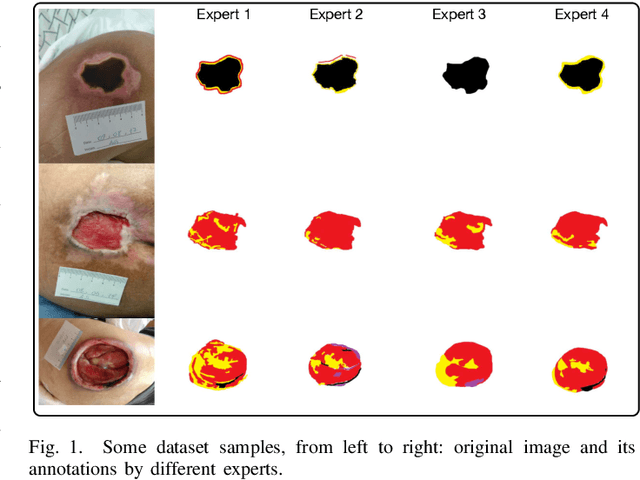
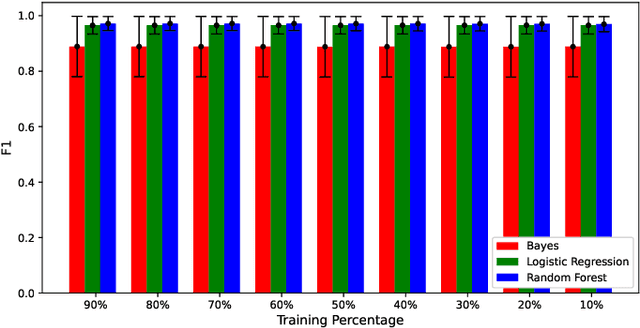
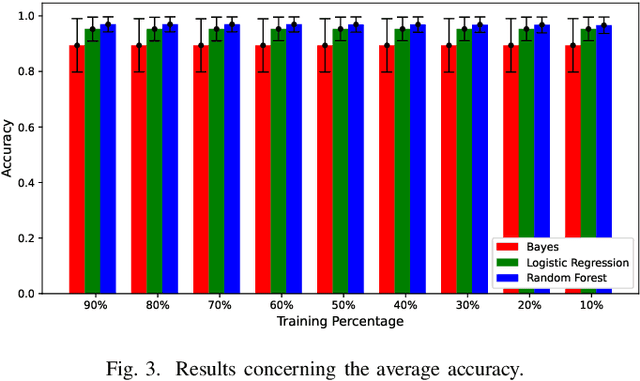
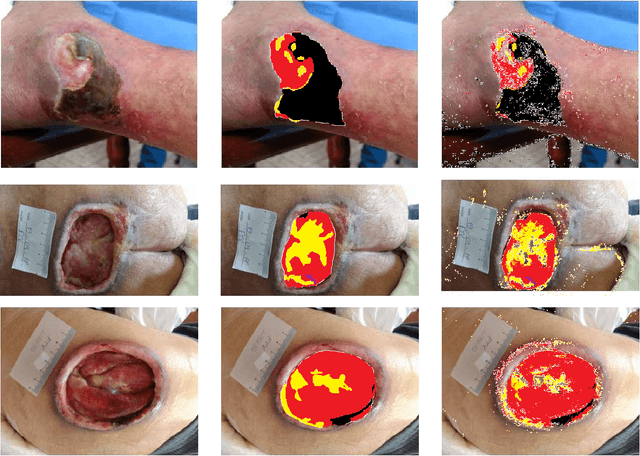
Abstract:Complex wounds usually face partial or total loss of skin thickness, healing by secondary intention. They can be acute or chronic, figuring infections, ischemia and tissue necrosis, and association with systemic diseases. Research institutes around the globe report countless cases, ending up in a severe public health problem, for they involve human resources (e.g., physicians and health care professionals) and negatively impact life quality. This paper presents a new database for automatically categorizing complex wounds with five categories, i.e., non-wound area, granulation, fibrinoid tissue, and dry necrosis, hematoma. The images comprise different scenarios with complex wounds caused by pressure, vascular ulcers, diabetes, burn, and complications after surgical interventions. The dataset, called ComplexWoundDB, is unique because it figures pixel-level classifications from $27$ images obtained in the wild, i.e., images are collected at the patients' homes, labeled by four health professionals. Further experiments with distinct machine learning techniques evidence the challenges in addressing the problem of computer-aided complex wound tissue categorization. The manuscript sheds light on future directions in the area, with a detailed comparison among other databased widely used in the literature.
Multimodal Speech Enhancement Using Burst Propagation
Sep 07, 2022
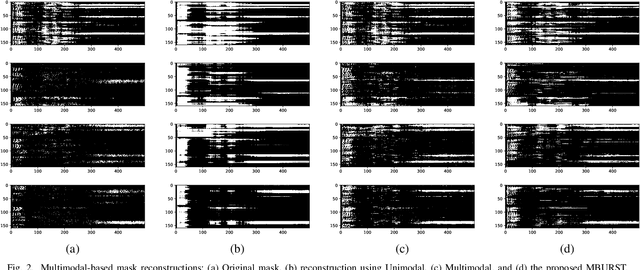
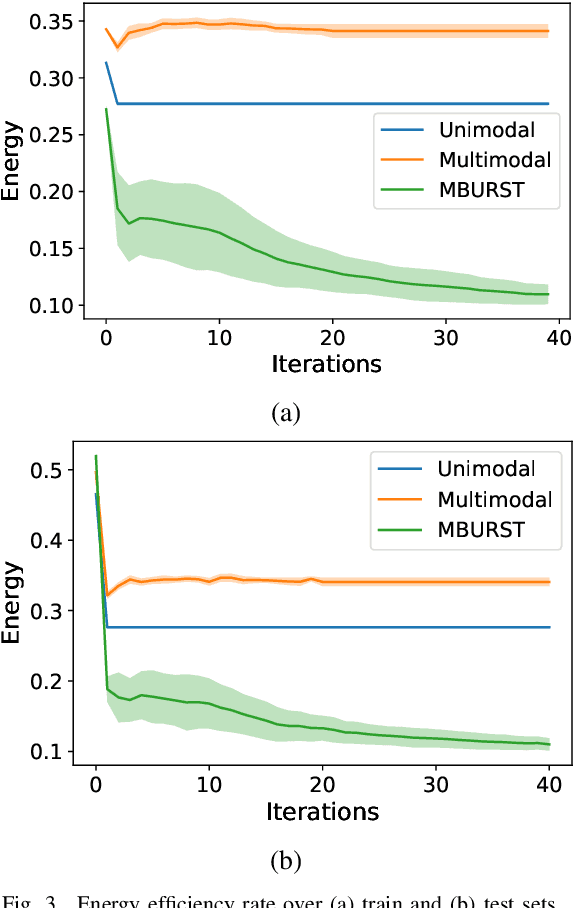

Abstract:This paper proposes the MBURST, a novel multimodal solution for audio-visual speech enhancements that consider the most recent neurological discoveries regarding pyramidal cells of the prefrontal cortex and other brain regions. The so-called burst propagation implements several criteria to address the credit assignment problem in a more biologically plausible manner: steering the sign and magnitude of plasticity through feedback, multiplexing the feedback and feedforward information across layers through different weight connections, approximating feedback and feedforward connections, and linearizing the feedback signals. MBURST benefits from such capabilities to learn correlations between the noisy signal and the visual stimuli, thus attributing meaning to the speech by amplifying relevant information and suppressing noise. Experiments conducted over a Grid Corpus and CHiME3-based dataset show that MBURST can reproduce similar mask reconstructions to the multimodal backpropagation-based baseline while demonstrating outstanding energy efficiency management, reducing the neuron firing rates to values up to \textbf{$70\%$} lower. Such a feature implies more sustainable implementations, suitable and desirable for hearing aids or any other similar embedded systems.
Canonical Cortical Graph Neural Networks and its Application for Speech Enhancement in Future Audio-Visual Hearing Aids
Jun 06, 2022
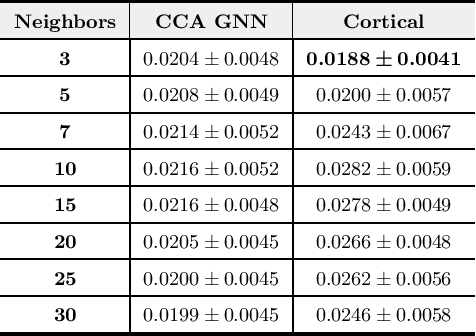
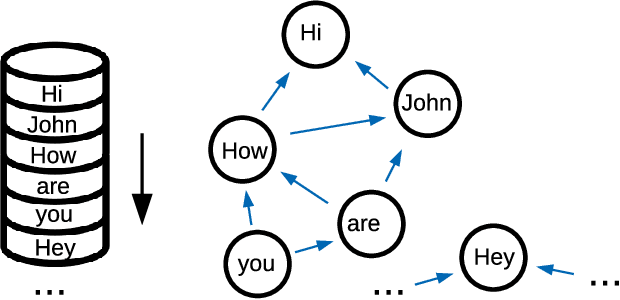
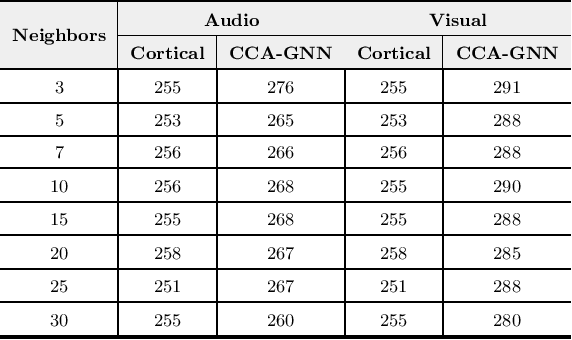
Abstract:Despite the recent success of machine learning algorithms, most of these models still face several drawbacks when considering more complex tasks requiring interaction between different sources, such as multimodal input data and logical time sequence. On the other hand, the biological brain is highly sharpened in this sense, empowered to automatically manage and integrate such a stream of information through millions of years of evolution. In this context, this paper finds inspiration from recent discoveries on cortical circuits in the brain to propose a more biologically plausible self-supervised machine learning approach that combines multimodal information using intra-layer modulations together with canonical correlation analysis (CCA), as well as a memory mechanism to keep track of temporal data, the so-called Canonical Cortical Graph Neural networks. The approach outperformed recent state-of-the-art results considering both better clean audio reconstruction and energy efficiency, described by a reduced and smother neuron firing rate distribution, suggesting the model as a suitable approach for speech enhancement in future audio-visual hearing aid devices.
A Novel Approach for Optimum-Path Forest Classification Using Fuzzy Logic
Apr 13, 2022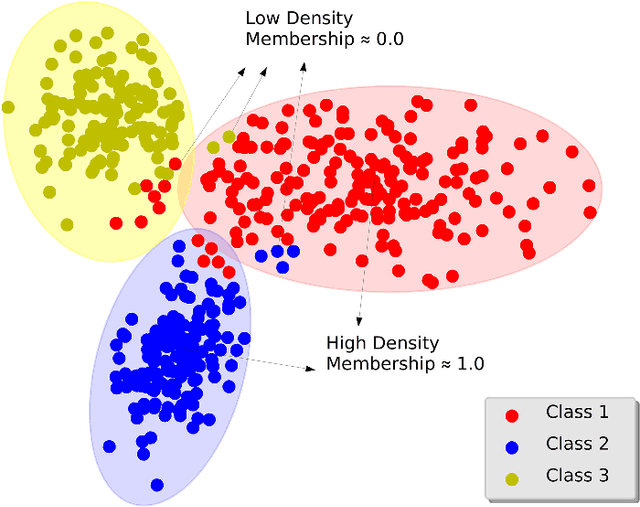
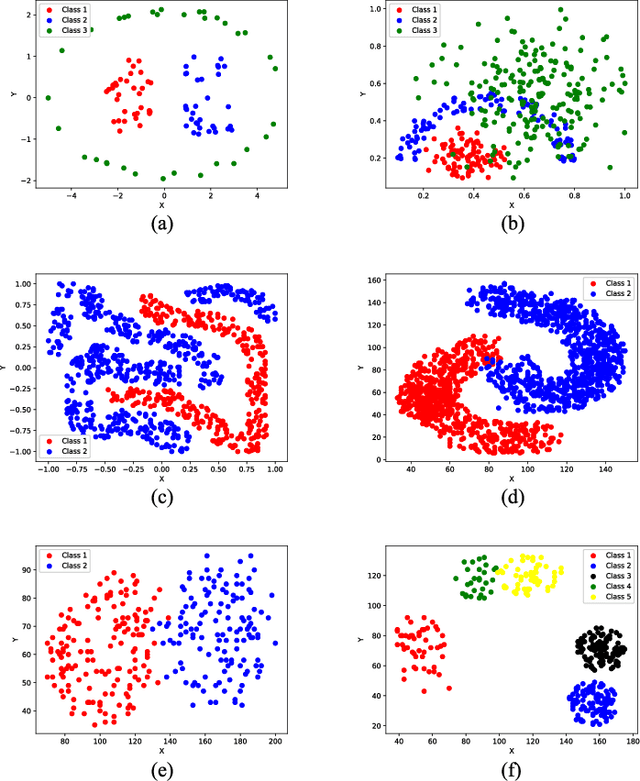
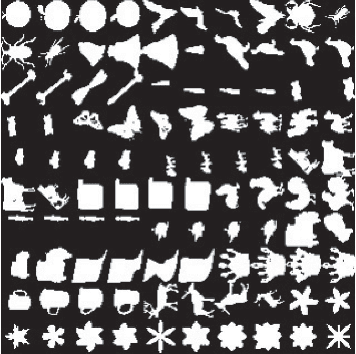
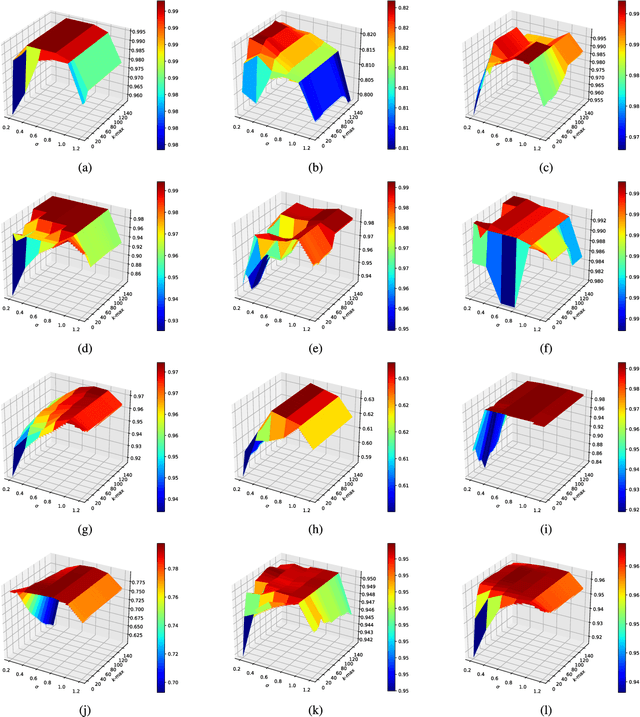
Abstract:In the past decades, fuzzy logic has played an essential role in many research areas. Alongside, graph-based pattern recognition has shown to be of great importance due to its flexibility in partitioning the feature space using the background from graph theory. Some years ago, a new framework for both supervised, semi-supervised, and unsupervised learning named Optimum-Path Forest (OPF) was proposed with competitive results in several applications, besides comprising a low computational burden. In this paper, we propose the Fuzzy Optimum-Path Forest, an improved version of the standard OPF classifier that learns the samples' membership in an unsupervised fashion, which are further incorporated during supervised training. Such information is used to identify the most relevant training samples, thus improving the classification step. Experiments conducted over twelve public datasets highlight the robustness of the proposed approach, which behaves similarly to standard OPF in worst-case scenarios.
Which Generative Adversarial Network Yields High-Quality Synthetic Medical Images: Investigation Using AMD Image Datasets
Mar 25, 2022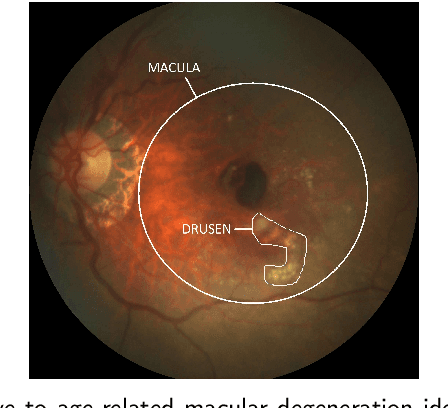
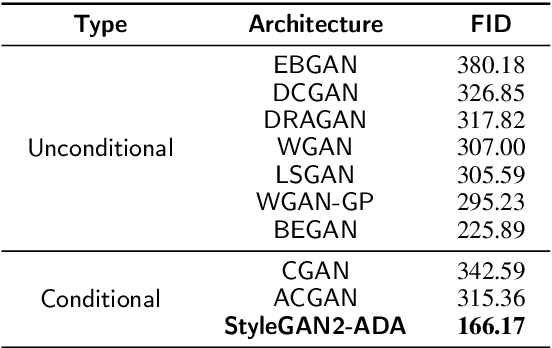


Abstract:Deep learning has been proposed for the assessment and classification of medical images. However, many medical image databases with appropriately labeled and annotated images are small and imbalanced, and thus unsuitable to train and validate such models. The option is to generate synthetic images and one successful technique has been patented which limits its use for others. We have developed a free-access, alternate method for generating synthetic high-resolution images using Generative Adversarial Networks (GAN) for data augmentation and showed their effectiveness using eye-fundus images for Age-Related Macular Degeneration (AMD) identification. Ten different GAN architectures were compared to generate synthetic eye-fundus images with and without AMD. Data from three public databases were evaluated using the Fr\'echet Inception Distance (FID), two clinical experts and deep-learning classification. The results show that StyleGAN2 reached the lowest FID (166.17), and clinicians could not accurately differentiate between real and synthetic images. ResNet-18 architecture obtained the best performance with 85% accuracy and outperformed the two experts in detecting AMD fundus images, whose average accuracy was 77.5%. These results are similar to a recently patented method, and will provide an alternative to generating high-quality synthetic medical images. Free access has been provided to the entire method to facilitate the further development of this field.
 Add to Chrome
Add to Chrome Add to Firefox
Add to Firefox Add to Edge
Add to Edge